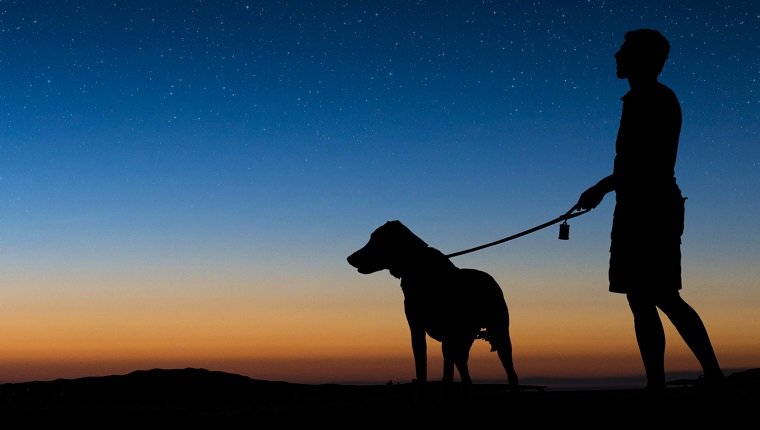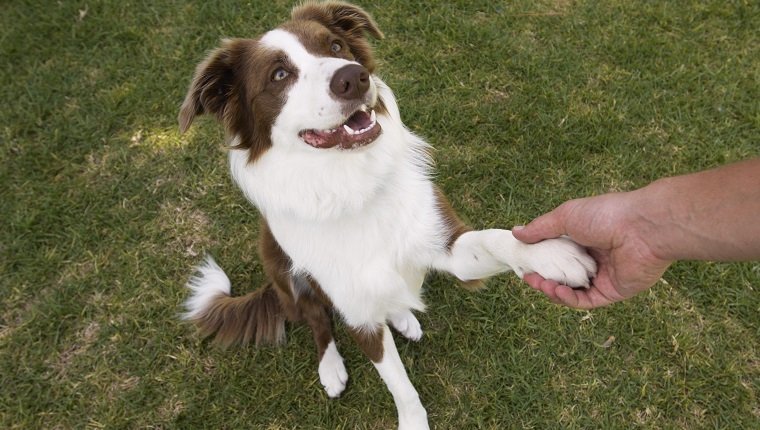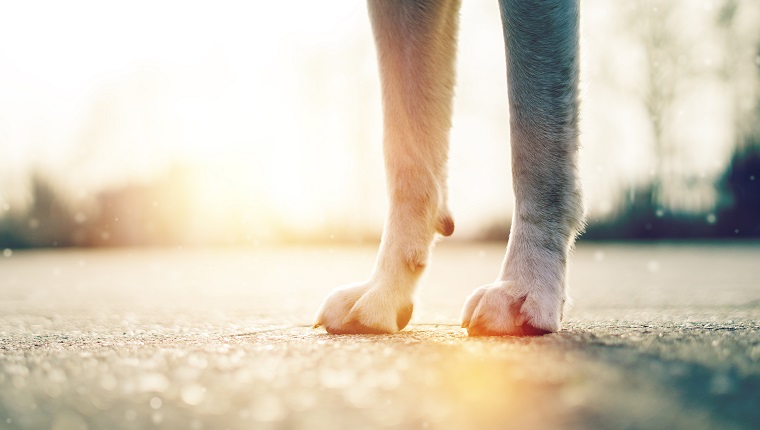Hot pavement can do some serious damage to your dog’s paws.
The long, sunny days of summer might make for great dog walking weather, but the bright sunshine can also cook sidewalks, streets, and driveways. That’s dangerous for your pup.
What should you do to keep your dog’s paws safe, and how do you know if the pavement is too hot? Here are a few tips to protect your pooch’s paws.
Too Hot? Here’s The Test!
Your dog needs to go outside both to go potty and to exercise. There may be no avoiding the fact that you’ll have to take a walk when it’s hot, but you still have to worry about hot asphalt.
There’s a simple test for you to know if the ground is too hot for your dog’s paws.
Place the back of your hand on the ground, and if you can’t keep it there for five seconds, then it’s too hot for your pup.
Avoiding The Heat

If your dog needs to go for a walk during the summer, there are some things you can do to avoid walking on hot pavement.
Try walking in the early hours of the morning before the sun has had a chance to heat the ground too much. An evening walk near or after sunset can also reduce exposure to heated pavement.
Specifically avoid pavement during the middle of the day or early afternoon, as these will be the times when asphalt is likely at its hottest.

During the day, stick to grassy areas. Grass won’t be as hot as asphalt and will be much easier on the paws.
Shady areas that are out of the direct sunlight for most of the day can also be safer, but be sure to do the five second test.
A nature walk through a shaded forest preserve with lots of grass can be a great place to enjoy a summer walk. Not everyone has an area like that to take advantage of, so you may need to rely on paw protection for your walks.
If You Can’t Avoid, Protect

You may live in an area where grass is sparse or where you simply can’t avoid walking on pavement. If that’s the case, you should protect your dog’s paws from the heat.
You can get special booties designed to keep paws safe. Use booties that are non-disposable and specifically for summer or all-terrain.
Summer booties have durable soles and often use mesh to allow paws to breath and not overheat. These are different from winter booties and disposable booties.
You can find a highly-rated set of summer dog booties on Amazon here.
Some dogs absolutely refuse to walk with booties on their paws. If that’s the case with your dog, you can try using paw wax for your walks.
Spread the wax on paws and between toes before you head out. It can get messy, and you’ll probably need to wipe paws down when you get home, but it should keep your pup’s paws safe.
You can buy a highly-rated paw wax on Amazon here.
Signs Of Burned Paws
If you have been walking on hot pavement with your dog, look for these signs that their paws are burned or injured.
- Limping or attempting to stop walking
- Licking or chewing at paw pads
- Darkening of skin on or around paw pads
- Blisters, peeling, or redness
- Any kind of damage to the bottom of the paws
What To Do If Your Dog Gets Burned

If you notice burns on the paw pads or signs that your dog’s paws may be getting hurt, it’s important that you get indoors right away. You may need to carry your dog to avoid further injury.
You will have to apply some first aid. Run the paws under cool water or use a cold compress. This will provide your dog with some immediate relief. Do not let your dog lick or chew the paw pads.
Take your dog to the vet right away. Burns can become infected, so your vet may give you some antibiotics, as well as medication for treating the burn.
Chewing or licking the paws can be a sign of other conditions like an allergic reaction, so your vet will rule out other causes.
Do you check the pavement before hot summer walks? How do you keep your dog’s paws safe? Let us know in the comments below.
Click the bold links in the article to shop for your dog and support our content!








